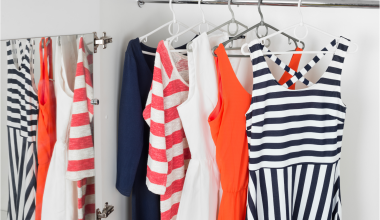Lolita fashion is a unique and captivating subculture that originated in Japan and has gained international recognition. Within the world of Lolita, there are various substyles, each with its distinctive aesthetic and flair. In this article, we’ll explore the fascinating differences between Classic Lolita and Sweet Lolita, two prominent Lolita substyles that cater to distinct fashion preferences.
Classic Lolita: Timeless Elegance
Classic Lolita, as the name suggests, exudes a timeless and elegant charm. It draws inspiration from the fashions of the Victorian and Edwardian eras, infusing them with a delicate, feminine touch. Here are the key characteristics of Classic Lolita:
- Color Palette: Classic Lolita tends to feature muted and understated color palettes. Soft pastels, dusty rose, ivory, and shades of brown and black are common choices. The emphasis is on subtle, refined colors.
- Prints: Classic Lolita prints often include intricate motifs such as florals, lace, cameos, and antique-inspired patterns. These prints contribute to the vintage aesthetic.
- Silhouettes: The silhouette of Classic Lolita dresses is more modest and reserved. Dresses are typically longer, with a focus on A-line or princess-line shapes. The goal is to achieve an elegant and graceful appearance.
- Accessories: Classic Lolita accessories are characterized by their simplicity. Pearl necklaces, lace gloves, and dainty headpieces are popular choices to complete the look.
- Hairstyles: Classic Lolita hairstyles often feature elegant updos, ringlet curls, or soft waves. Bonnets and large brimmed hats are also common headwear options.
Sweet Lolita: Playful and Youthful
Sweet Lolita, in contrast, embraces a playful and youthful aesthetic. It takes inspiration from themes like dolls, fairy tales, and all things cute and whimsical. Here are the defining features of Sweet Lolita:
- Color Palette: Sweet Lolita features a vivid and pastel-heavy color palette. Think bubblegum pink, baby blue, lavender, and mint green. Bright and cheerful colors are the hallmark of this substyle.
- Prints: Sweet Lolita prints are filled with kawaii (cute) motifs, including animals, desserts, bows, and whimsical characters. These prints add a childlike charm to the dresses.
- Silhouettes: Sweet Lolita dresses often have shorter hemlines and puffy, cupcake-like shapes. The goal is to create a playful, doll-like appearance.
- Accessories: Sweet Lolita accessories are abundant and tend to be larger and more colorful. Oversized bows, themed bags, and novelty socks are popular choices.
- Hairstyles: Sweet Lolita hairstyles often feature wavy or curly hair with colorful hair clips and headbands. Bonnets with bows or animal ears are also common headwear.
Personal Style Preferences
The choice between Classic Lolita and Sweet Lolita often comes down to personal style preferences. Some individuals may resonate more with the timeless elegance and sophistication of Classic Lolita, while others may be drawn to the whimsy and cuteness of Sweet Lolita. It’s important to note that Lolita fashion is highly customizable, and individuals can mix and match elements from different substyles to create a look that suits their unique style.
Conclusion
Lolita fashion is a captivating subculture that allows individuals to express themselves through clothing in a whimsical and creative way. Classic Lolita and Sweet Lolita represent two distinct facets of this fashion, offering unique aesthetics and a vast array of possibilities for self-expression. Whether one chooses Classic Lolita, Sweet Lolita, or a blend of both, the key is to embrace the joy of dressing up and celebrating individuality.







